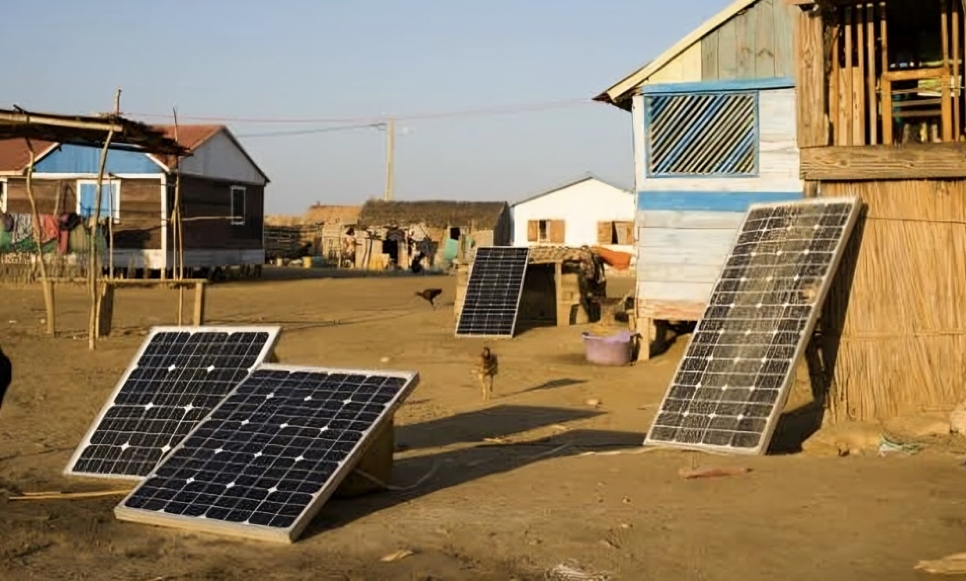KEY POINTS
- Microgrids are helping African villages like Sabon Yelwa and Entasopia gain energy independence.
- Solar-powered microgrids improve access to healthcare, education, and economic opportunities.
- These grids provide clean energy, reducing the need for fossil fuels and cutting carbon emissions.
For quite some time now, lack of electricity has been one of the biggest hurdles that African villages face.
However, a new champion is emerging to liberate communities plagued with these conditions from energy scarcity, and that is microgrids. These miniature independent power generation systems are facilitating rural villages to produce and control their electricity, providing them with stabilizing and clean power.
Presently, some villages exist without having to depend on conventional power systems due to microgrids powered by solar or wind energy. These systems have been vital in changing the narrative of the energy sector in the African continent.
What are microgrids?
Microgrids are localized power systems that can function independently or in connection with the microgrid.
In many African villages, where access to electricity is scarce or nonexistent, micro-grids are the lifesavers. Unlike most utility power plants that are situated far from the village, these grids enable power generation at the village level.
They are highly sustainable and cost-efficient since they are implemented with renewable power sources such as solar power, wind energy, or even mini hydroelectric plants.
Microgrids in Africa supply energy for homes, schools, businesses, health clinics and many others, without the use of fossil fuels. They are currently seen as the ‘shining star’ across the continent, particularly in places not connected to the national electricity grids.
Below is a list and brief description of two success stories of microgrids in African villages:
Sabon Gida, Nigeria
In Sabon Gida, a village in northern Nigeria, a microgrid powered by the sun saved the entire community from electricity woes.
Electricity was once a distant dream in this remote Nigerian village. The 3,000 residents relied on costly, unreliable diesel generators, or worse, had no power. This severely limited businesses, schools, and even health services.
But everything changed when a solar-powered microgrid was installed. This microgrid now generates enough energy to power local shops, schools, and a health clinic which provides care for pregnant women and children, offering much-needed stability.
One of the key players making this happen in Africa is Husk Power Systems. Backed by the World Bank, the company is set to bring these hybrid solar microgrids to more underserved areas in Nigeria. In doing so, they aim to reduce the reliance on diesel generators and kerosene.
Beyond powering the community, the new microgrid also created jobs as villagers were trained to maintain the system for long-term success. This set a clear example of how microgrids in Africa can transform rural life.
Sikasso, Mali: A solar success story
The village of Sikasso in Mali had challenges similar to Sabon Gida, Nigeria. Before 2020, electricity was scarce in the community, and people relied on candles and kerosene lamps.
In 2020, a transformative impact on business and living happened in Sikasso when the village installed a hybrid microgrid combining solar panels and biomass energy. Today, this system powers the homes of over 5,000 residents, revolutionizing daily life.
Thanks to this new grid, led to students holding evening classes, and health clinics storing medicine that needed refrigeration.
These solar-powered solutions in Nigeria and Mali demonstrate how renewable energy can uplift even the most isolated areas.
Microgrids in Africa: Africa’s energy future
Many countries in Africa still have weak national electricity supply systems, where a large number of people cannot have access to electricity. Connecting more people to the grid is either too costly or impossible due to technological constraints.
However, microgrids in Africa provide a feasible solution. They are not just a short-term solution to Africa’s energy problems but rather a solution with a future. Because they are constructed at the grassroots and adjusted to the size of the community, they are suitable to operate even in the most remote regions.
Governments and private firms across the continent are now investing in microgrids as they find them suitable to provide energy security to remote areas.
Such installations will increase in the coming years as more villages turn to the described sustainable energy solution.



